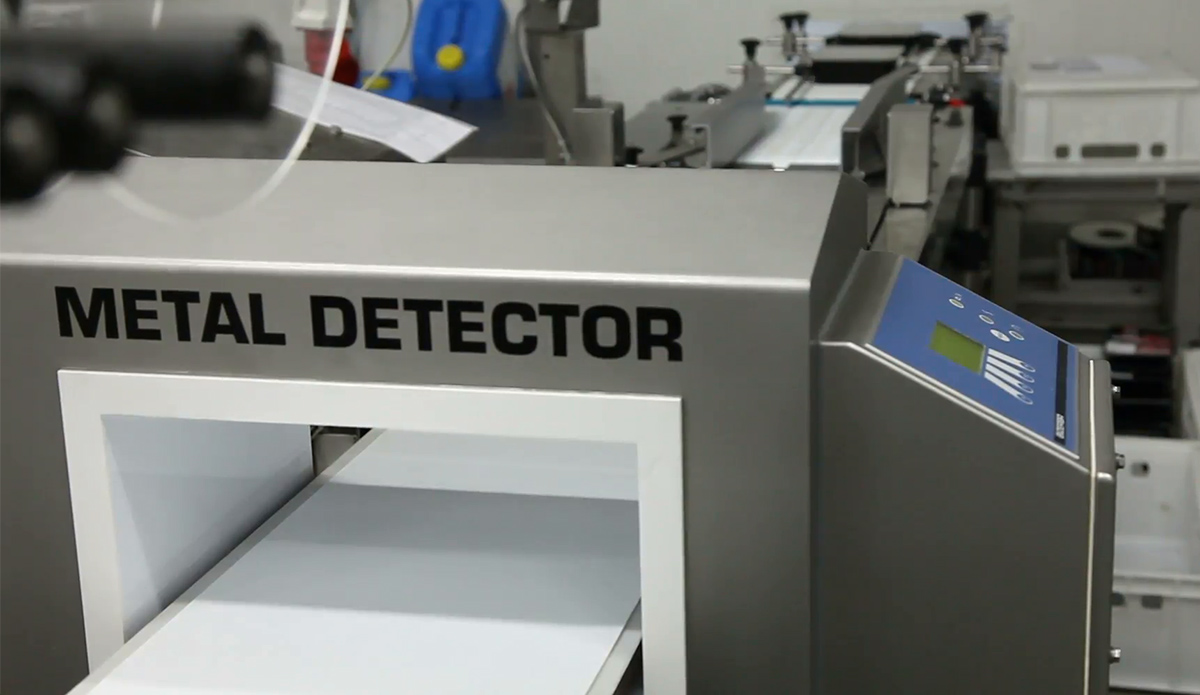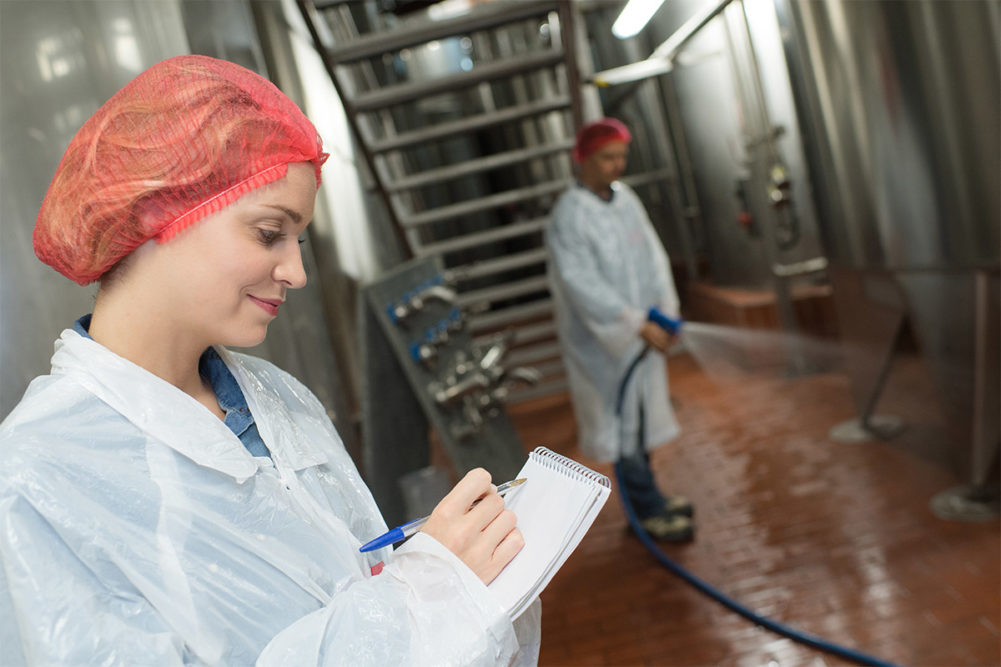This article was published in the September 2019 issue of Pet Food Processing. Read it and other articles from this issue in our September digital edition.
With an increased focus on pet food as part of the recent Food Safety Modernization Act (FSMA) regulations, manufacturers are assessing all safety and quality measures, including the risk of contamination by foreign material, proper declaration of weights and detailed label information.
“This assessment oftentimes results in identification of deficiencies in how they are controlling and preventing issues in quality and safety,” says Robert Rogers, senior advisor, food safety and regulation, Mettler Toledo Product Inspection Group, Lutz, Florida. “We are seeing an increased utilization of product inspection systems to address these concerns and improve the processes.”
Earlier this year, a deployment specialist from Georgia-based Nexcor Food Safety Technologies was at the manufacturing facility of a well-known pet food brand. He described it as “cleaner and more organized than almost any other food plant that he’s been in” and noted that had they not produced dog food, he’d eat anything that came from there. “In recent times this has become more the rule rather than the exception,” says Nexcor President Robert Burgh. “While most facilities have always produced safe, high-quality products, increasing regulations have given food safety teams an equal place at the corporate table, particularly in detailing how to protect the brand.”
“While most facilities have always produced safe, high-quality products, increasing regulations have given food safety teams an equal place at the corporate table, particularly in detailing how to protect the brand,” says Robert Burgh, Nexcor Food Safety Technologies.
Nick Treblik, business operations director, Cargill Feed & Nutrition, US, Wayzata, Minnesota, says he’s seeing standards being raised across the industry. “Cargill has long had rigorous expectations around safety and risk management for all employees, no matter whether we work in sales, production, administration or another capacity,” he says. “Today, those internal expectations have become a requirement for the entire industry. The new compliance regulations dictate to everyone working in pet food production that, hey, it doesn’t matter what your role is, you must know how to produce things safely.”
Brian Wood, director, HydriPet Ingredient and Sanitation Solutions, Brookfield, Wisconsin, says pet food is now regulated the same as human food with the exception of allergens, but processors are addressing consumer concerns despite no actual requirement. “Some of this has led to new equipment designs, physical alteration of plant layouts and in some cases, the need for a new facility because the design of the building and/or process cannot be altered to meet today’s regulations,” he says.
Production evolution
As new compliance regulations have come along, Burgh says documentation has seen the largest change. “Regulations require that everything that affects or intends to affect food safety must be documented,” he says. “This is a modern, big change for many companies. Protocols have also changed. Protocols like the usage of hairnets may not have been previously required in many facilities.” Some areas Wood has seen evolve most recently are the physical separation of raw ingredients and finished product areas, controlling traffic, and more efficient and automated equipment that include integrated controls, monitoring and reporting.
Sharon Dobesh, director, technical services, The Industrial Fumigant Company (IFC), a pest management firm based in Kansas City, Missouri, says processors are requesting more timely and accurate pest identifications and wanting to know more about the biology and habits of pests. “This will help the facility find the root cause of a pest problem and find ways to control or mitigate the pest in a timely manner,” she says. “Another area which has changed is the need to have better documentation and records for auditors. This includes pest sighting logs, approved pesticide lists and pest management records (including maps) of activity in all devices, such as insect light traps (ILTs), rodent stations, insect bait stations and sticky traps.”
Jerry Heath, board-certified Entomologist for IFC, says some of greatest innovations in pest management in the last 15 to 20 years relate to compliance regulations, with three technologies evolving the most. “Better pheromone products have been developed for monitoring (plus control in some cases), and software programs that utilize pheromone monitoring trap data. Plus, other monitoring tools have facilitated trend reporting and predictability. This feeds into the current need for prevention rather than reaction,” he says. Additionally, the adoption of Insect Growth Regulator (IGR) technology has been instrumental in phasing out the use of methyl bromide fumigants in food processing, as well as reducing the need for fumigations and down time.
Because many of the pet food facilities were not originally built to make pet food but may have been feed or flour mills or grain processing facilities, Treblik notes, adapting them to meet today’s expectations has probably been one of the biggest areas of evolution. “For example, Cargill has long had a ‘kill step’ before packaging our product so it is sanitized for safe consumption – even by humans,” he says. “We then package the food in a clean air environment to eliminate any Salmonella risk. Under the new regulations, every pet food manufacturer in every facility must follow this practice.”
Overlooked areas
Historically, manufacturers have viewed product inspection as an end-of-line (EoL) process, but Rogers warns limiting inspection to the EoL can increase waste and decrease efficiency. “Finding deficiencies at this point wastes all of the value that has been added to the product,” he says. “It is more cost-effective to conduct inspections throughout the production process, ensuring that only conforming products continue through the process, and non-conforming ones are discarded before further value is added. Once the final product is packaged and all the value has been added to the product, the EoL inspection should rarely detect deficiencies,” he explains.
“It is more cost-effective to conduct inspections throughout the production process, ensuring that only conforming products continue through the process, and non-conforming ones are discarded before further value is added,” suggests Robert Rogers, Mettler Toledo Product Inspection Group.
For incoming and outgoing trailer inspections, Dobesh says trailers need to be completely cleaned out, including piles of pallet debris in the corners from previous shipments, which is not always done. “This ensures there are no pests or other issues using those piles as a harborage, which could then infest a new shipment,” she says.
From a sanitation standpoint, environmental programs and controls are often overlooked, according to Wood. “They are challenging to implement and continually enforce in a busy production facility,” he says. “But product microbial contamination can often be traced back to the environment.”
A company-wide culture
One of the largest challenges food processors have in adhering to regulations is getting the appropriate “buy-in” from all departments. Much of what is considered food safety compliance is performed by team members from production and engineering. If not everyone in the facility is on board with following protocol, audit failure is inevitable.
In areas with a tight labor market, the biggest issues Nexcor sees are gaps in food safety training. “Another issue is defining protocols that make sense,” Burgh says. “Not only must food safety happen, it must also be documented by all the departments involved. All departments must be able to perform their share of food safety without it being a hindrance to what they perceive their primary focus is, which could be production, maintenance, etc.”
Treblik says a top challenge is engaging people, particularly new employees, on the expectations, and offers a three-part approach: education, training, and a process designed for success. “Education means demonstrating why a specific process or requirement is important – winning our team’s hearts and minds so they’re fully invested in safety,” he says. “Training is the practical part of this: ensuring people know how to take the safe action. Designing processes for success means we must make compliance not only a requirement but a natural behavior for our employees. They shouldn’t have to make any difficult decisions about whether to comply.”
Other challenges include working with regulators on how to interpret the regulations and ensuring facilities that pre-date the regulations comply with the new expectations. This means maintaining rigorous internal controls, such as strict change control processes. “As new technology becomes available, as we, as an industry, grow our collective knowledge, and as inspectors increase their interactions on the regulations, the interpretation of what compliance looks like can evolve,” Treblik says. “We must stay abreast of these changes.”
“Designing processes for success means we must make compliance not only a requirement but a natural behavior for our employees,” says Nick Treblik, Cargill Feed & Nutrition.
Initiating change
Change is not easy. Burgh suggests all real changes must be taken with a top-down approach. “Food safety is ultimately brand protection, and responsibility starts with the CEO and continues on down to the sanitors,” he says. “When a corporate environment backs up words with actions, everyone in the company gets on board. Food safety actions follow this same logic when treated with the appropriate importance.”
Wood says every plant is required to have a Preventive Controls Qualified Individual (PCQI) to oversee and manage the Food Safety Plan, which identifies hazards then applies preventive controls to eliminate or manage them. “Process, sanitation, supply chain and recall plans are implemented,” he says. “Procedures are documented and monitored to ensure they are up to date. A verification process ensures implementation and effectiveness. Corrective actions and reviews are included to ensure current compliance.”
At Cargill, Treblik explains there’s a robust management of change process, or “MOC,” which is done to initiate any regulation changes. “This begins with asking ourselves the ‘what if’ question whenever a change is needed,” he says. “Let’s say we need a new piece of equipment that requires a new process. We’ll scenario-plan with multiple stakeholders, for example food safety, regulatory and EHS teams, mapping the post-change process to flag any unintended consequences. This allows us to plan for all eventualities.”
Cargill also has a three-step training program where an employee must demonstrate they have read the instruction document, must observe someone performing the task and must be observed by someone while doing the task to ensure they are doing it properly.
Rogers says change starts with resources, whether that involves equipment, infrastructure, or people. He adds that meeting compliance should be the absolute minimum goal. Striving to exceed requirements with a focus on safety and quality is a better goal.




